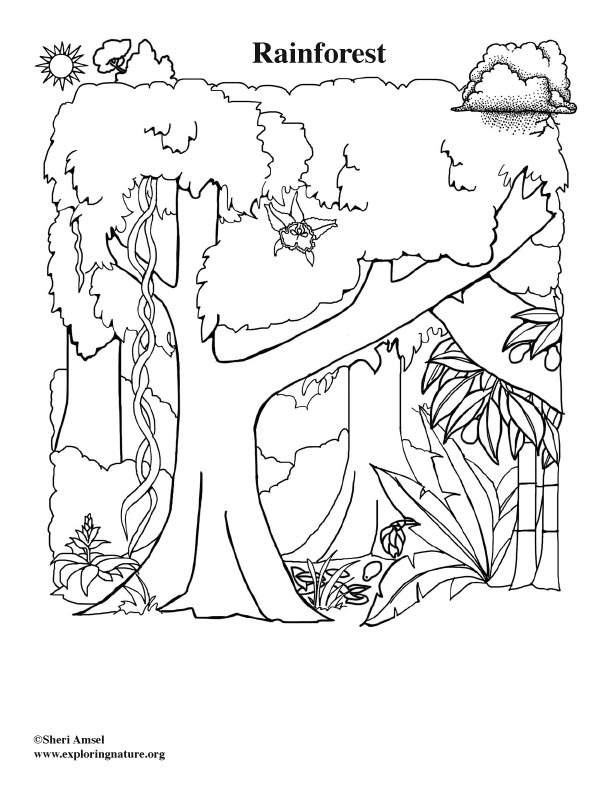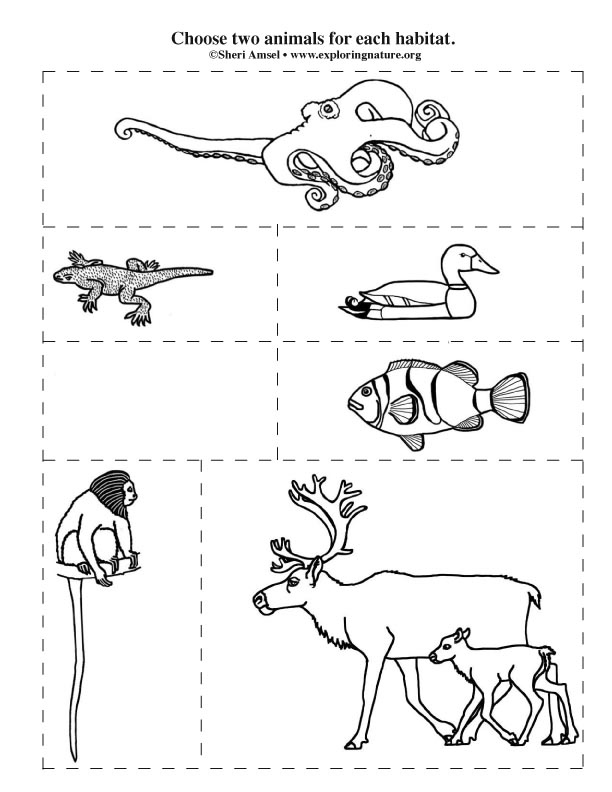

Each habitat has different characteristics that make it an ideal home for specific animals and plants. In turn, animals (and plants) have adaptive traits that suit their habitat. In this activity, talk to young students about habitat characteristics (temperature, rainfall, available food and shelter) and the characteristics of animals (warm fur, the need for hot sun, the ability to climb trees, the immunity to stinging anemones, the digestion for eating buds, grass, or tree bark, the dentition for chewing down trees or tearing at prey, camouflage, etc.). Help them use critical thinking to decide in which habitat each animal belongs. By adding the appropriate animals to each habitat, they are also constructing a model to represent the relationship between different plants and animals in their habitat. Students can also draw (depending upon their develoing motor skills) into their habitat models how those animals may change their habitat to suit their needs (nest, den, burrow, etc.)
Below find 6 habitats sheets and an animal sheets with 18 animals. Help students cut out two animals that belong in each habitat. Then color both the habitats and the animals. Help them carefully glue the animals into place in their habitats. Mount them on cardboard for better endurance.
Here is an Habitat-Animal Model Key with some suggestions for how animals might change their environment.
1. Arctic Habitat (caribou, polar bear)
Polar bears dig snow dens.
2. Deciduous Forest (black bear, gray squirrel)
Black bears den under stumps, gray squirrels make leaf nests in trees and bury acorns underground.
3. Rainforest (toucan, monkey)
Toucans nest in tree hollows or abandoned tree holes.
4. Desert (American) (rattlesnake, lizard)
Lizards dig under mounds of warm sand at night.
5. Ocean Coral Reef (octopus, clownfish)
6. Wetland Pond (beaver, mallard)
Beavers build houses and dams, mallard build nests on the edge of wetlands on dry ground.
K-LS1-1 Use observations to describe patterns of what plants and animals (including humans) need to survive. [Clarification Statement: Examples of patterns could include that animals need to take in food but plants do not; the different kinds of food needed by different types of animals; the requirement of plants to have light; and, that all living things need water.]
K-ESS2-2 Construct an argument supported by evidence for how plants and animals (including humans) can change the environment to meet their needs. [Clarification Statement: Examples of plants and animals changing their environment could include a squirrel digs in the ground to hide its food and tree roots can break concrete.]
K-ESS3-1 Use a model to represent the relationship between the needs of different plants and animals (including humans) and the places they live. [Clarification Statement: Examples of relationships could include that deer eat buds and leaves, therefore, they usually live in forested areas; and, grasses need sunlight so they often grow in meadows. Plants, animals, and their surroundings make up a system.]









